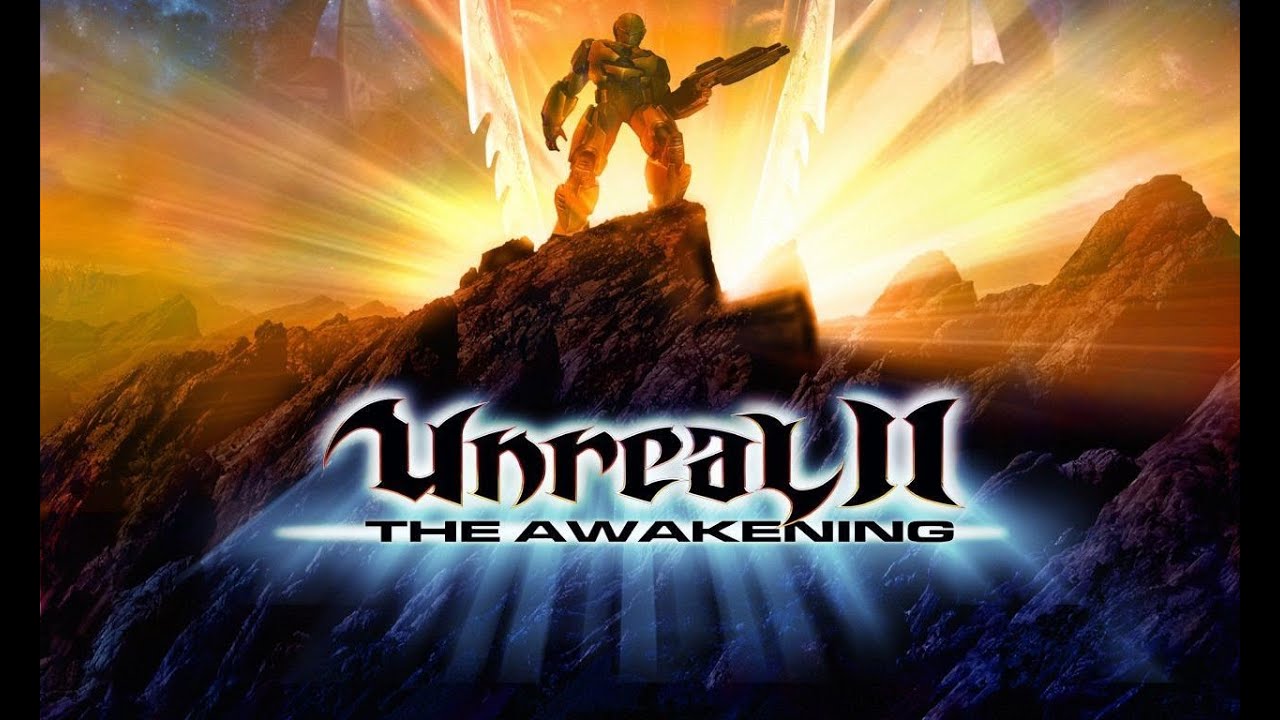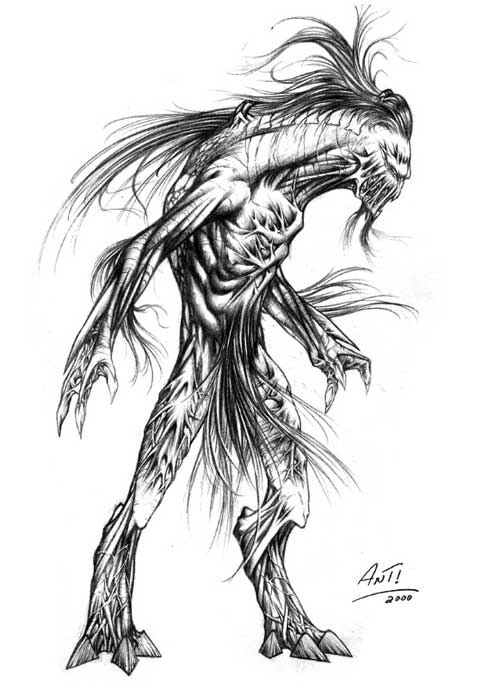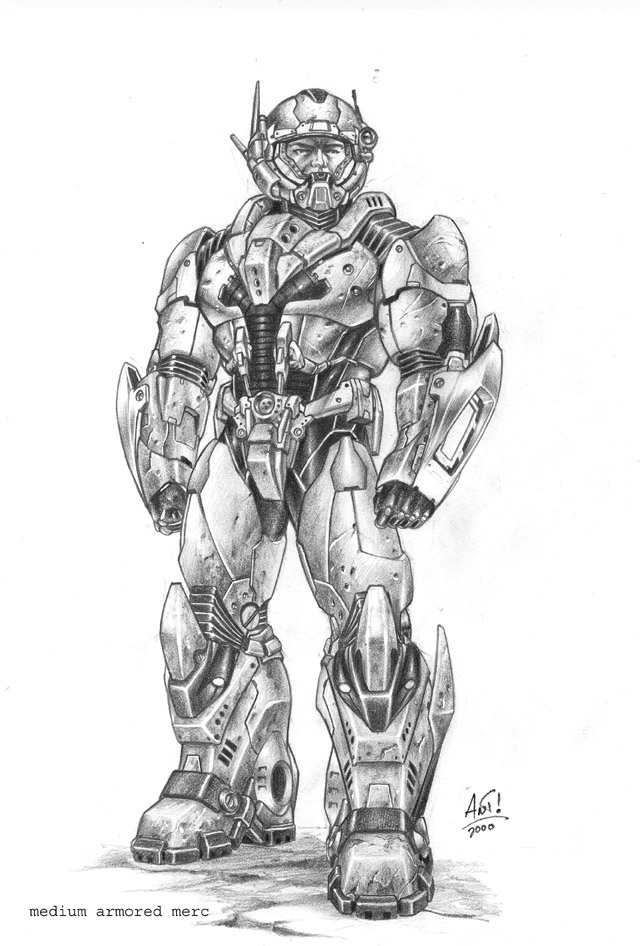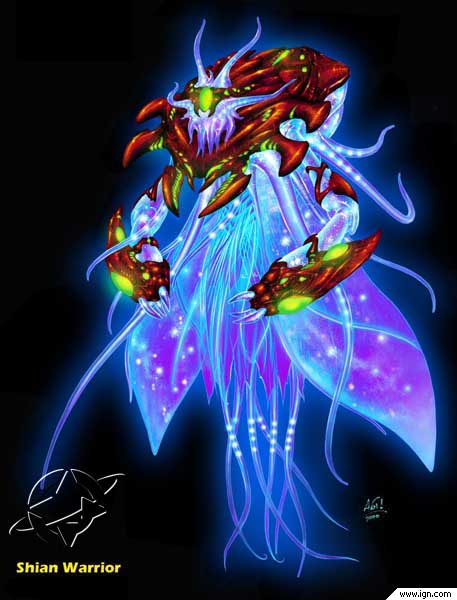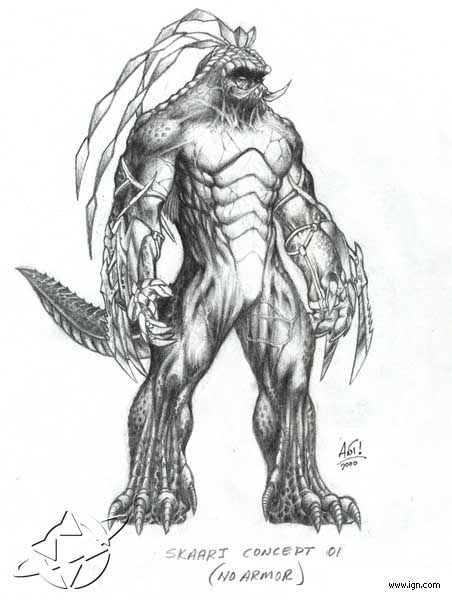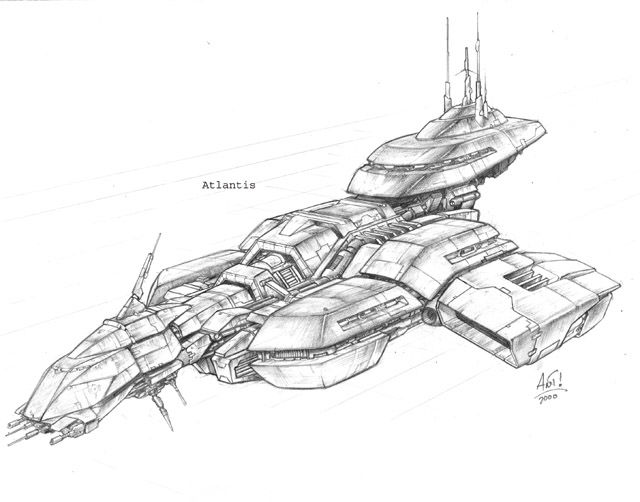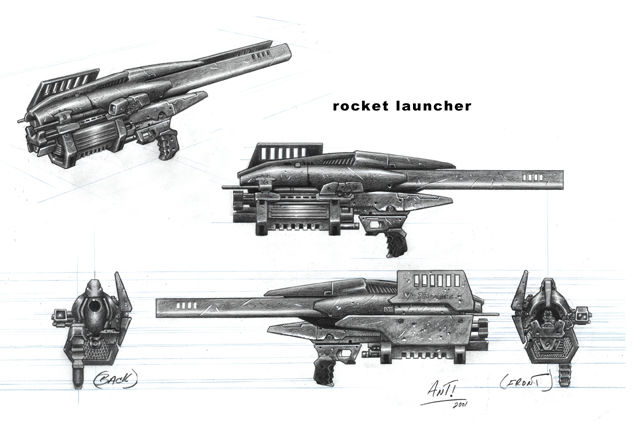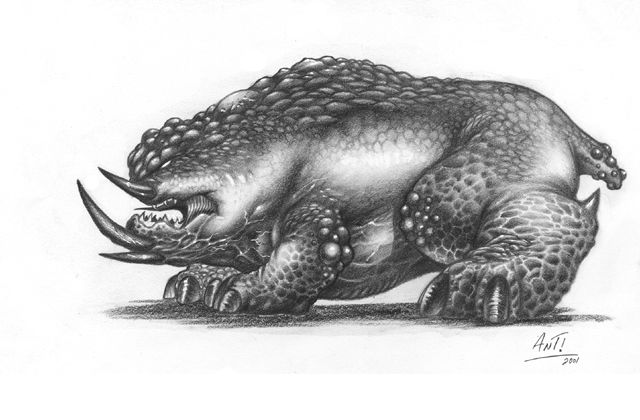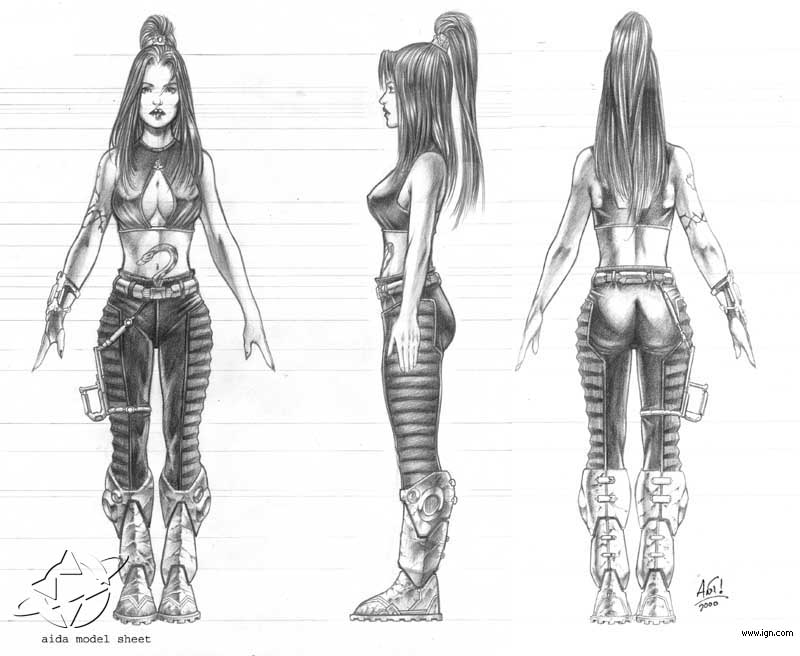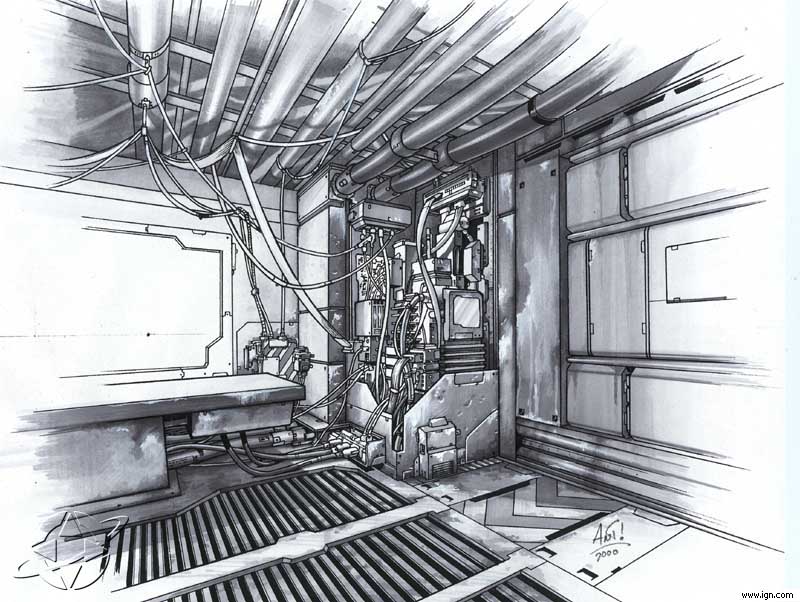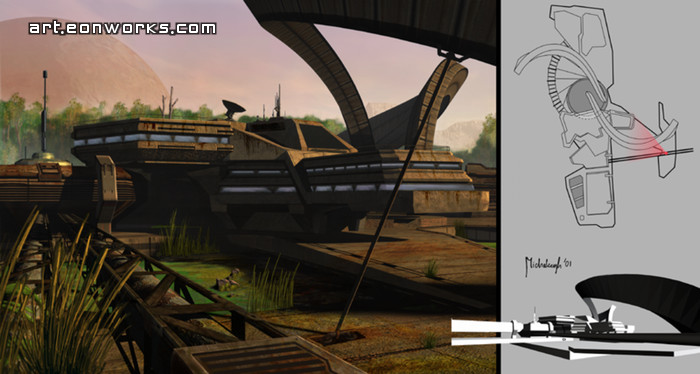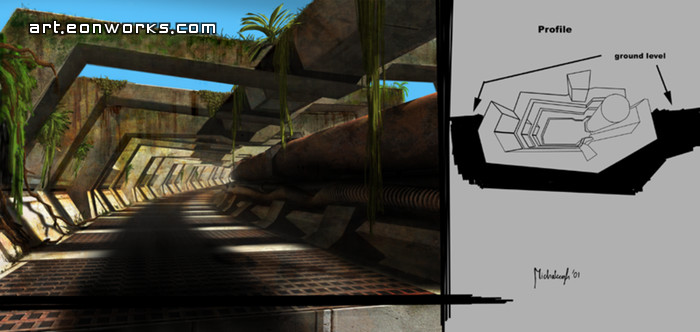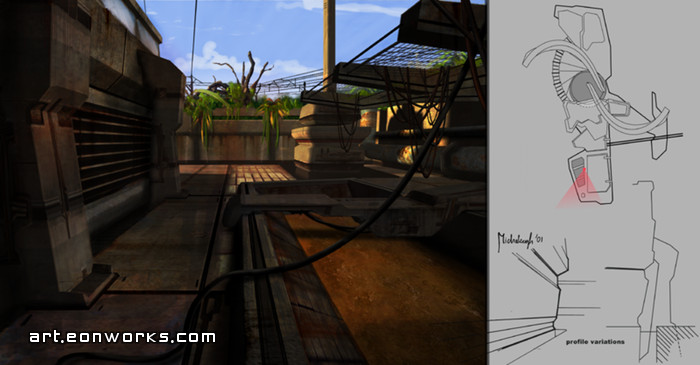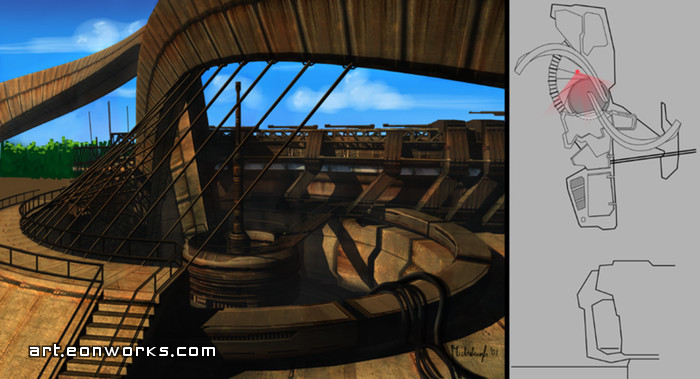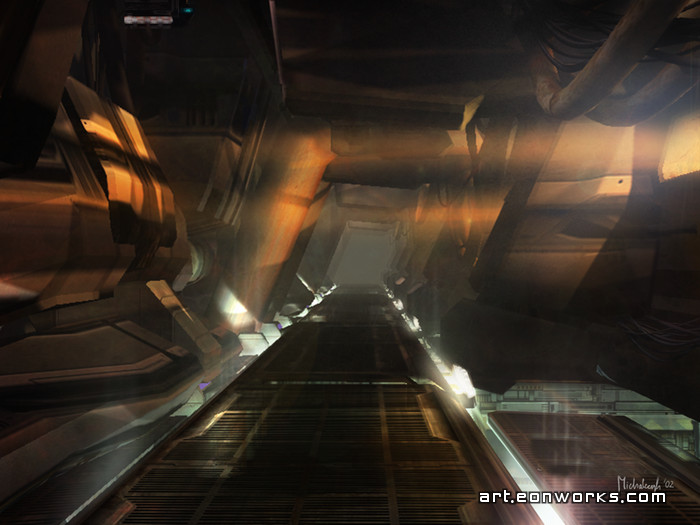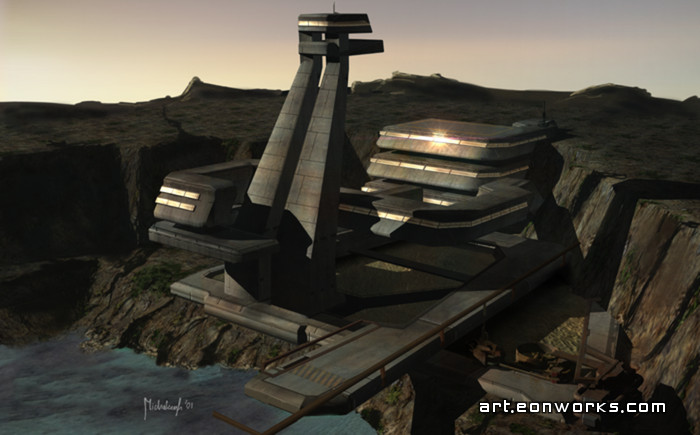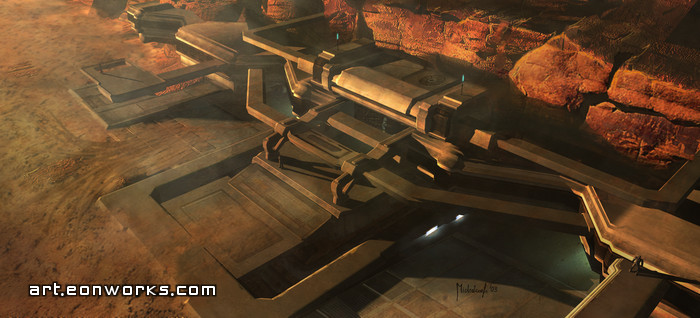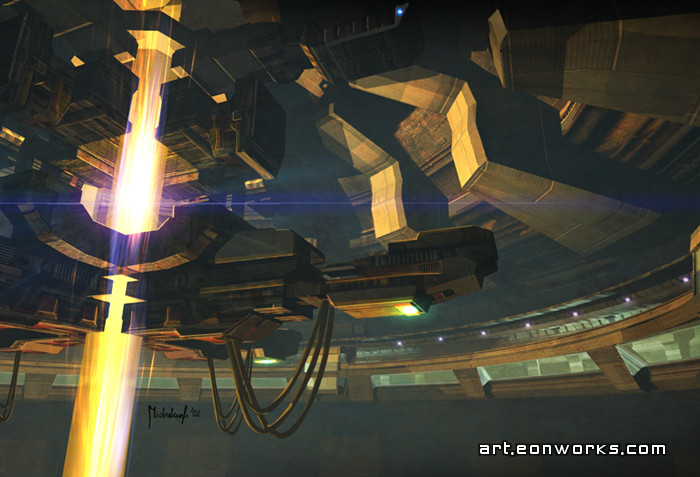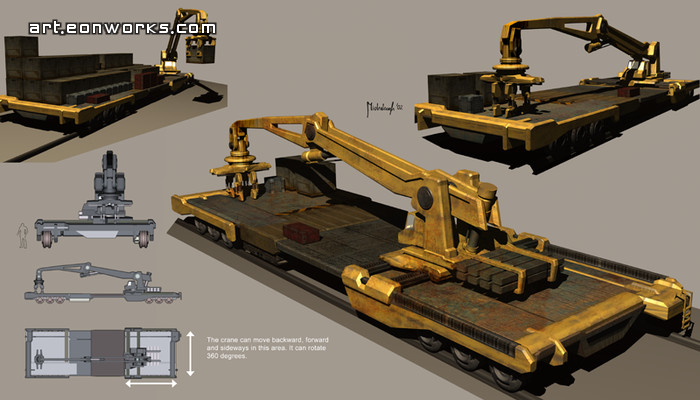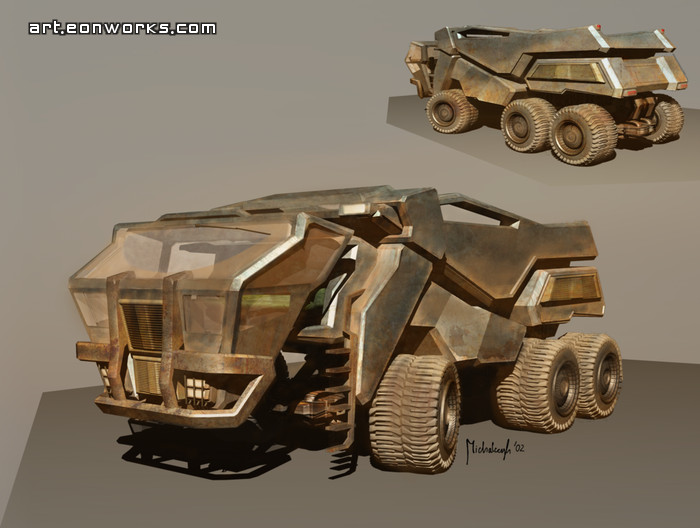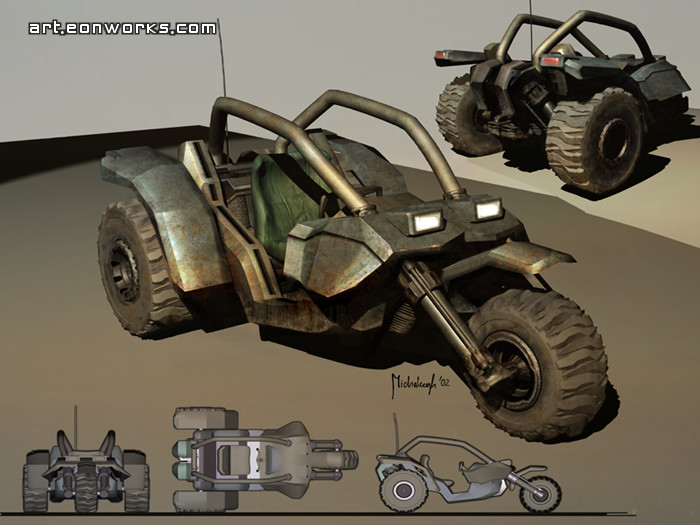Unreal 2 was a single-player, science fiction, first person shooter for the PC and the sequel to Epic’s hit, Unreal. It leveraged Epic’s Unreal engine technology to deliver a beautiful, atmospheric, story-heavy experience. After its initial release in 2003, the game was ported to the XBox and the XMP multiplayer module was released for free.
This is the story of its making.
Return to Na Pali
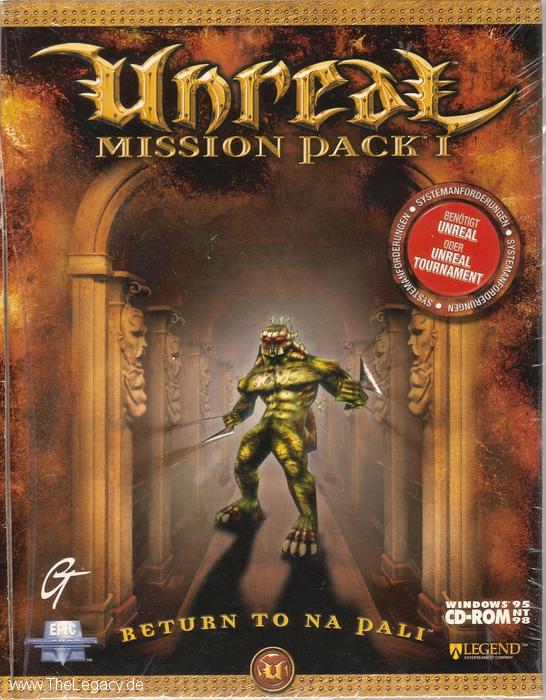
Our experience with the Wheel of Time was an education. That project demonstrated that Legend had skill and experience working with a new technology (Unreal), and our technical guys–notably Mark Poesch and Aaron Lieby–were key contributors to the Unreal community, helping other licensees with their issues and building some of the earliest tools for the engine. Even before we shipped WoT, Legend was tapped by Epic (Unreal developer) and GT/Infogrames (publisher) to create a mission pack for Unreal. It was called Return to Na Pali.
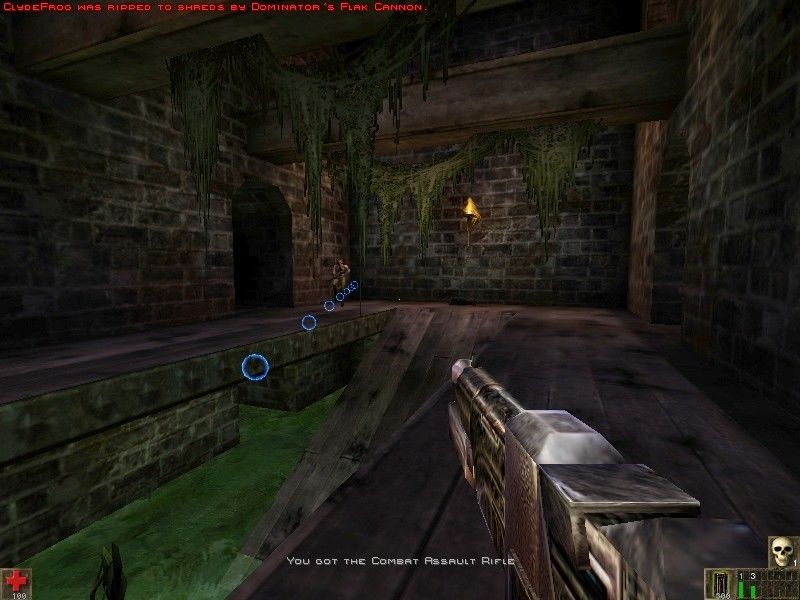
Mike Verdu headed up this project. He unabashedly took whatever unreleased assets he could from the development of Unreal, but supplemented them with a lot of new material put together by David Kelvin and new hire Matthias Worch. The new story was a direct continuation of the Unreal plotline: same characters, same planet, same environments. That made a lot of sense given the assets Mike and his team had to work with. The mission pack was exactly what fans expected and was well received.
The Birth of Unreal 2
Both Epic and Infogrames were interested in making a sequel to Unreal, but Epic (or their partner company Digital Extremes) couldn’t do it themselves. They were too involved in the multiplayer-only projects Unreal Tournament and Unreal Championship.
During the course of Wheel of Time, Infogrames acquired Legend, which made us an in-house development studio. We had proven experience with Unreal. And we were known for our visual quality and story-telling ability. Epic and Infogrames agreed that Legend should make a continuation of their SP-focused brand, a sequel to Unreal.

Legend was excited about the prospect. Unreal was a household name. Unreal 2 could be huge. We knew the perils of working with constantly maturing technology, but we had also shipped a game with the same challenges. We were confident we could pull it off and potentially create a hit.
Mike Verdu took on the project, which made lots of sense. He was a co-studio director. He had already designed and produced the well-reviewed sci-fi adventure game Mission Critical. He was the producer of Return to Na Pali. And he had a strong idea about what this new game should be.
What is Unreal, really?
The new concept was an abrupt turn. Unlike Na Pali, a game that hewed closely to its source material, the sequel severed almost all ties to the original. Mike wanted to blow through the design envelope; he would take the player to a variety of different planets, let him fire all new weapons, and meet a host of new characters–including a new lead. And he had a specific story in mind inspired by the corporations introduced in Unreal 1.
It should be noted that both Epic and Infogrames were fully on board with this direction. They were just as excited about broadening Unreal’s horizons.
No question that this sequel was ambitious, as a sequel to Unreal should have been. Now, I don’t fault ambition, especially at the beginning, blue-sky stage of a project. As Warren Spectre told me once: “Shoot for the moon, because you’ll likely only hit New Jersey. If you shoot for New Jersey, you’ll only hit Kansas.” However, the high profile of the project led to very early press, and these interviews included features that we should not have revealed at that stage, including factions that the player could support or resist (which would influence the outcome), dynamic conversations, deployable defenses, drivable vehicles, and multiplayer–which we will cover later.
Looking Good
With Mike at the helm, I moved onto developing something completely different: a wacky concept called Endgame. While I was away, Mike dove into the design and enlisted the team to contribute, which engendered a lot of investment.
Game development started on a good foot. The team from Wheel of Time and Na Pali transitioned seamlessly onto Unreal 2, confident they’d continue their excellent work based on their hard-won skills and experience. Apart from Epic itself, our level designers had some of the most experience with Unreal in the industry. Scott Dalton, Matthias Worch, James Parkman, and–eventually–Grayson Edge were all talented powerhouses with the ability to tackle not only gameplay, but aesthetics too.
And when it came to our art staff, we were firing on all cylinders. Paul Mock–one my key talents on Wheel of Time–stepped up to become art director on U2. And in addition to our veterans, we added a number of new people, including Anthony Pereira, a fantastic concept artist that drew everything from characters to environments to UI. Here is some of his work from U2.
The Unreal 2 team also added an environmental concept artist pulled from the hard sci-fi scene in Denmark: Dawid Michalczyk. His work on sci-fi buildings and vehicles was amazing. Here is a sample.
Technical Foul
But development wasn’t all prettily-painted rainbows. While we could build levels (and newly-implemented static mesh decorations) until the cows came home, we also had to make the game work.
During WoT’s development, I learned a hard truth; if the game you’re making isn’t the exact game that the engine-developers are also making, you’re in for headaches. Don’t get me wrong; even then, Unreal was powerful and versatile. We knew and loved its capabilities. But at that stage, Epic wasn’t the huge, customer-focused company they are now. They had limited resources, and they had their own list of priorities. Some of those coincided with ours, but many didn’t.
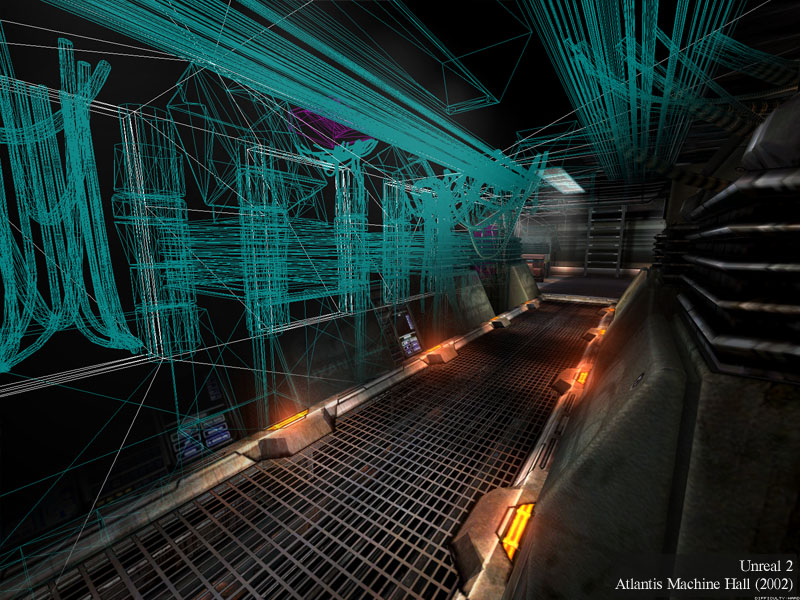
Sometimes, we’d need a feature that wasn’t planned or we’d receive features we didn’t need. But many times, we’d get new builds of the engine that completely broke much of what we’d painstakingly developed. Our game could take weeks to fix–all the while knowing that even that work could be upended as well. But not integrating the new builds wasn’t an option: we had to be as cutting-edge as possible when we released. This was Unreal 2!
Development fell behind. Too much time lost to recovery led to little progress on new features. With deadlines looming, it was hard to know what to focus on. What would work? Would the art we’d created even run at a decent frame-rate? With the SP campaign so far from completion, how could we tackle MP too?
I Knew You’d be Back
Morale started to slip. People still believed in the project, but lack of progress led to some bad feelings. Around this time, Mike began to pull back from leadership. He asked if I could help out with production. I agreed, but only on the condition that I would absolutely not get involved in art and design. This was important to me. It’s was Mike’s vision, not mine.
So I started to work with the entire team, establishing tasks and deadlines, making sure people had what they needed, nailing down communication channels both between internal members and with our external clients (Epic and Infogrames). I sat in on art reviews, but only to check off tasks. Given that I art-directed most of my other projects including Wheel of Time, people began to ask me to weigh in with my opinions. To their confusion, I refused.
You see, there are two things you need to understand about the situation.
First, at that time, coming off projects I directed from the ground up, I was used to controlling the creative vision of the games I worked on, and I knew that if I got invested in a design or artistic direction, I would do all I could to see it through. I definitely had opinions, but given that I was just helping out in production, I didn’t think it was appropriate to put my thumb on the scale. I didn’t want to step on toes or undermine Mike’s vision.
Second, we had a team of chefs. And they weren’t wilting flowers. Talented, assured folk have strong opinions, definitely in their areas of expertise, but also about everything else.

In fact, a crisis along these lines was already brewing on the art side. Our concept artists were trained to make beautiful art; our level designers’ artistic eyes were born from practical experience, and they were the last ones to touch the environments (which gave them a lot of power). Who should own the look of the levels? This rift caused a lot of friction and hard feelings, something I had to manage directly by laying down lines of responsibility, even when those weren’t popular with everyone.
Regardless, I wasn’t willing to throw my $.02 into this volatile cauldron of hard-headed opinions from people who had lived with the game much longer than I. It was easier to stay quiet than potentially start a battle that wouldn’t make things better.
The Clients

There were two major clients in this process (four, if you count the dev team and the fans, who both were very invested and still had to be managed). But who had power over what was painfully ambiguous.

You see, the contract between Infogrames and Epic was quite insane from a business perspective. Evidently, the terms allowed Epic to have its cake and eat it too. Epic had final approval over everything, and they could require development to continue as long as necessary to get to that approval. Sounds good, right? However, Epic wasn’t on the hook financially for those decisions, which meant that Infogrames had to foot the bill. Indefinitely.
To be fair, I chalk this up to Epic’s glorious contract negotiating skills. Why wouldn’t you ask for those things if the other guy is willing to sign?
This put Legend in a precarious position. We had two masters that controlled our fates with conflicting agendas. Epic wanted to make a great game and figured it would be done when it was done. Why not? They weren’t paying for it. And Infogrames was burning money, so they wanted to ship the game yesterday, quality be damned.
The Schedule
The writing was on the wall. There was no way we’d make the original schedule we signed up for. We had to start cutting. And we had to convince everyone it was for the good of the game.
Of all those promised features I listed from the press interviews at the beginning, only the deployable defenses remained. Vehicles? Gone. Factions? Out of here.
What hurt most was multi-player. Every Unreal game ever had multi-player and virtually every other first-person shooter on the market did too. But it was the riskiest feature on the slate. Somehow, Epic and Infogrames accepted the rationale that the Unreal franchise was about SP story; Unreal Tournament, on the other hand, was about MP action.
So we cut MP, one of the most beloved elements of the design.
To the team, and to Mike especially, this was devastating. What were we building exactly? Who had the vision in their head? Who would know when we were done?
Mike continued to pull back from the project, leaving more and more responsibility to me. So now, even I was asking those questions.
Let’s Figure This Out
And the answer became clear: me. Someone had to hold the vision. While investment and collaboration is valuable, Unreal 2 was in so much trouble that someone needed to see what we were building, understand why the experience was worth making, and know when we were done. We had some incredibly talented folk, all working tirelessly to make great stuff. I needed to be sure it came together into a product we’d be proud to ship.
I put on my director cap and dived in. The focus was now clearly on the SP experience, but nothing was close to being done. I examined every level. Were there any we could do without? Gone (with the promise that maybe we’d revisit them in a mission pack). Those that remained were in rough shape: beautiful bones, but unfinished and empty of narrative and gameplay.
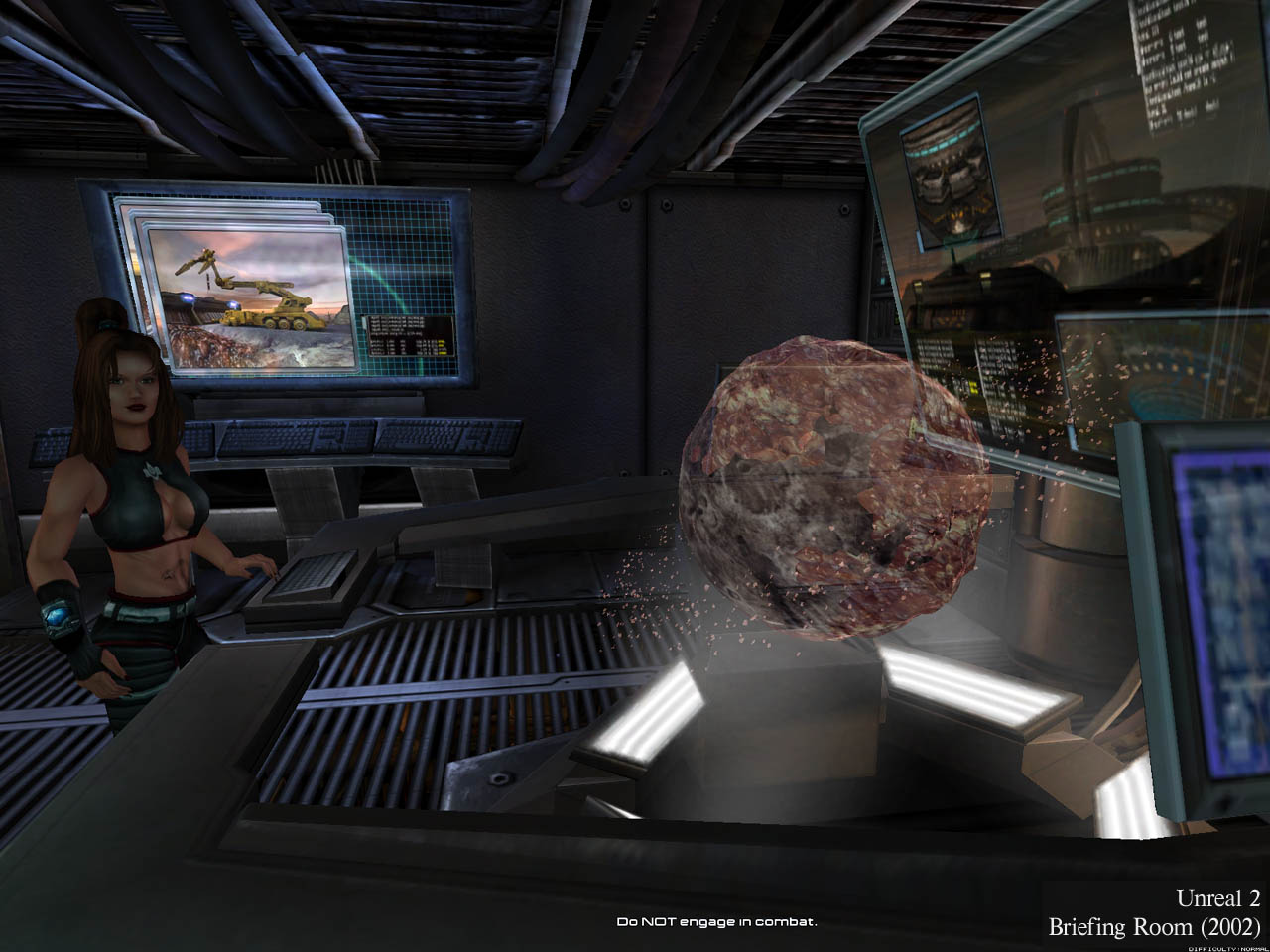
Before I go on, I want to say that Legend had great designers on Unreal 2 before I ever showed up. A ton of design work had already been done. The weapons were great. The existing character designs were beautiful. The locations were cool. The overall story was set in stone (including the support characters in the Atlantis). The foundations were laid. But the game, the moment-to-moment experience, wasn’t compelling. There was some stuff to shoot, but I wanted reasons to do so.

I’m a narrative guy. Back in Wheel of Time, before my level designers built our levels, I scripted everything. I wrote the dialog, I designed the puzzles. I laid out the interactions. When I looked at the U2 levels, I realized that they needed this attention. So I worked backwards. Instead of designing the experience and building the levels around them, I used the environments I had and retrofitted them with interesting narrative, mission objectives, puzzles, and cinematic moments: reasons to move forward in the levels.
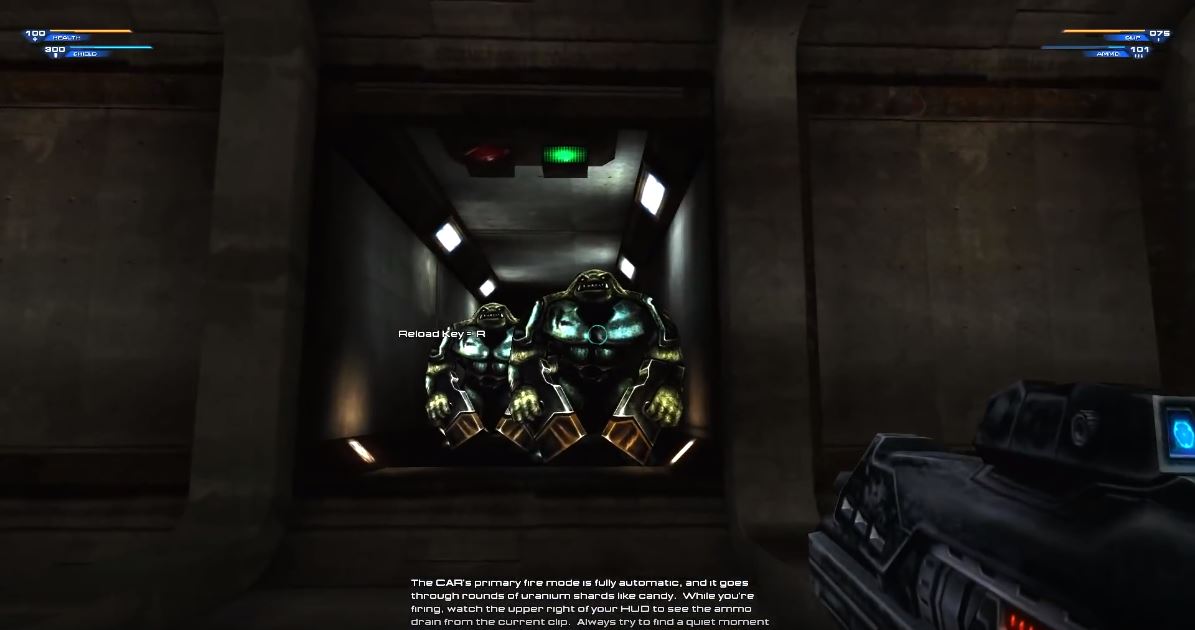
What’s more, I know fans care deeply about the lack of connection between Unreal 1 and 2. I did too. So, while much of the game was formed already, I looked for opportunities to at least slip a few connections where I could. The first was the tutorial, where I slapped in actual art from Unreal 1 as target practice.
Another opportunity I couldn’t pass up was the iconic introduction of the Skaarj. In Unreal 1, his arrival was one of the most memorable introductions in gaming,
This new intro recalled that intro, but updated it and made it vertical.
Since it happened in one of his levels, Grayson Edge was the designer on the hook for implementing the elevator scene–maybe one of the most complex scripts in the game. After I described what I was looking for, he brought it to life. It was so good that we used it for our E3 presentation. And it was moments like that, when these talented guys brought stuff to life, that kept me moving forward. With each new tweak, the game became better.
Now, after I described our team dynamic, how do you think my coming in and taking charge went over? It went exactly how I feared it would go from that moment I refused to offer my opinion on the art. Making hard choices wasn’t easy or popular, especially when I cut something dear to someone with one hand while changing or adding needed content with the other.
But at least someone was making those calls now. And the game was moving toward a defined goal.
The Meeting
All this pressure of our clients pushing in two different directions (schedule and quality) had to explode at some point. And it did.
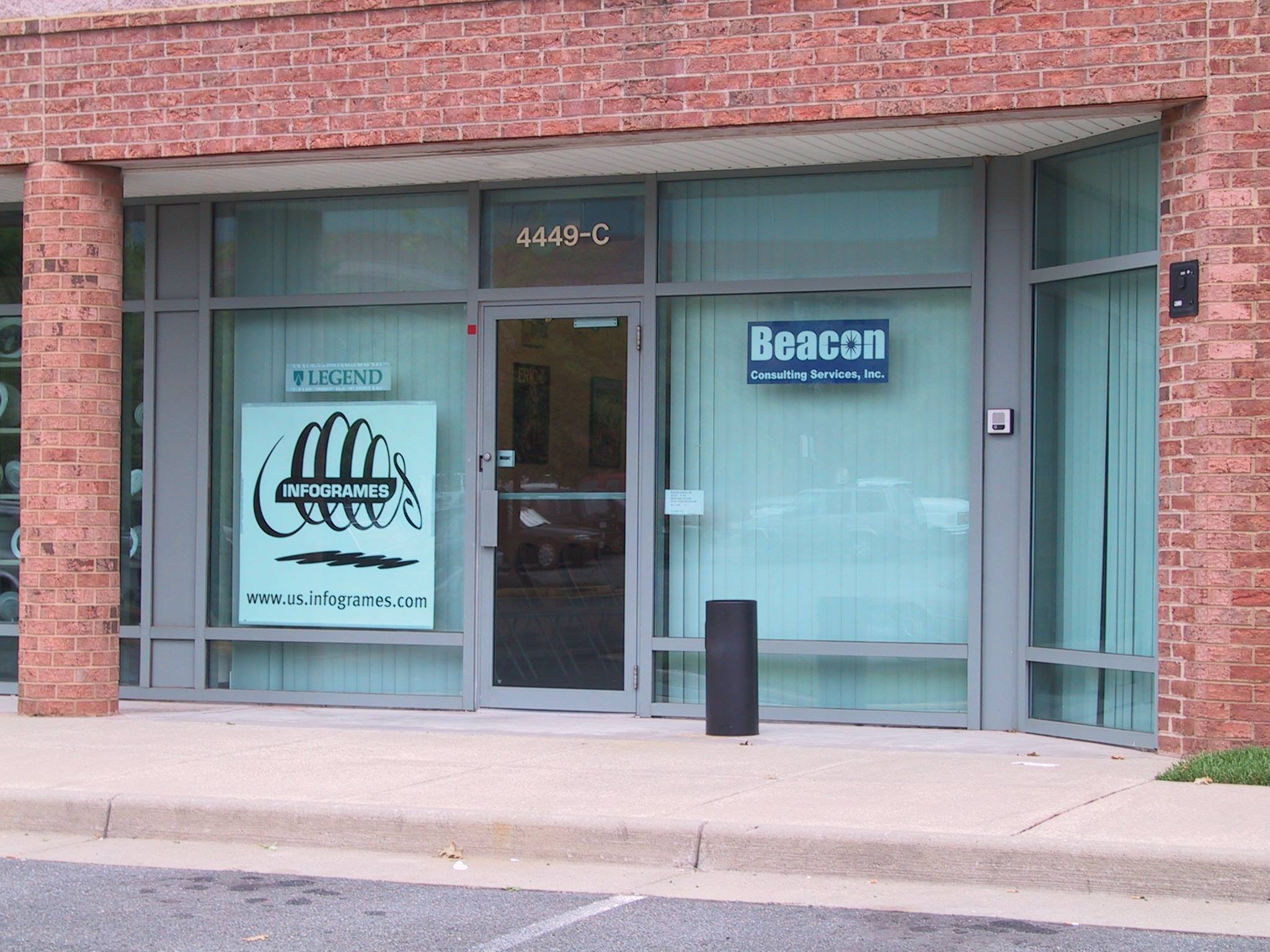
It was agreed that all involved parties would meet and hash through the issues preventing release. Epic and Infogrames both sent representatives to Legend’s office.
On one side of the conference table, Infogrames insisted that it should only take two months to complete the project.
On the other side, the Epic guys erupted in laughter. You see, we had been in constant communication with them about our development. They had the bug reports. They knew what content was missing. They knew what tech they hadn’t completed or yet added to the engine. So they knew that two months was completely out of the question.
After some discussion, Epic agreed to keep their demands reasonable and not stretch out the schedule too far, as long as quality wasn’t compromised. That was likely Infogrames’ goal from the start: begin with an unreasonable request and then compromise to get Epic to agree to take some responsibility for the schedule. Given the contract, even that was a win for them.
But now the pressure was really on. We had to ship. Soon.
How Does it End?
After 15 years of working there, Mike quit Legend and, especially, Infogrames. While it wasn’t exactly a surprise, it was heartbreaking. Mike was a founder of the company. He was a big part of what made Legend special. It was difficult to watch him leave.
As he walked out the door, Mike made clear that the one thing about the game he wanted to hold onto was the story, notably the controversial ending. Even now, reaction to the ending is polar: you love it or you hate it.
With Mike gone, Bob Bates, Mark Poesch and I assumed leadership of the studio. Mark focused on the technical challenges. Bob jumped in to take over the writing duties on U2 by fleshing out the main characters–adding backstory and depth–and writing a ton of dialog. I worked with the art and level design team to nail down the overall progression and bring the maps to a playable, interesting, and deliverable state.
Finally, our work began to pay off. We were spitting distance away from a final product. Proud of what we had wrought, we decided to hold a press day.
The Big Reveal
We created a special build for that day. It gave the reviewers the ability to jump forward in the game to any chapter. And we held back the ending, because we didn’t want anyone to spoil it for the public.
The reactions were positive. The game was beautiful. It was fun. But one thing I kept hearing: it was short. People weren’t jumping through the game; they were playing through every level. And they were almost finishing it in the six or so hours at the event.
Perhaps it wasn’t as long as I would have liked, but these people still hadn’t played the last couple of levels. And they were playing on Easy. I told myself that we were fine.
And if we had shipped with multiplayer, we might have been. As a purely SP game, there was no replayability. People played Unreal 1 and Unreal Tournament for hundreds of hours, and that was the fans’ expectation. How could nine compare with that?
You Want How Much?
After all our blood and tears, we shipped. Here is the release trailer.

But wait! Infogrames made one final decision about the game. I ask you: given the lack of multiplayer and a relatively short SP experience, would it be a good idea to make it the most expensive game on the shelf? (Hint: it wouldn’t be).
Unreal 2 hit stores a full $10 more than other new releases. If fans didn’t have anything else to complain about, this would have been enough.
Blowback
I maintain that Unreal was an impressive product for its day. It introduced a lot to the genre, it was undeniably beautiful and had a lot of great moments. I like to think it would have been better received in a world where our game hadn’t carried the fan expectations born from being the sequel to Unreal, or set early expectations with all of those promised features like factions, vehicles, and a revolutionary multiplayer mode, or been horribly overpriced.
Our biggest fans, the ones most invested in our success and whose expectations were highest, were the most disappointed.
I should have seen it coming, but I had worked at Legend for 14 years, and every release was lauded. Legend games got reviews in the 90s. We won awards.
Every bad–or even mediocre–Unreal 2 review hit hard. It was difficult to move on.
Aftermath
In fact, it was hard for everyone at Legend to move on. Infogrames was cagey about what our next project would be. We pitched a number of possibilities, including my own Endgame and Deadline (I will be releasing some of these designs here soon), and Bob’s Spy Girl. Nothing got traction.
In the meantime, since we had a team and some time, the idea of returning to Unreal 2 MP was raised. Infogrames didn’t seem to care one way or the other (I actually think they were dealing with some internal nastiness that we’d see come our direction later). So the Unreal 2 XMP project was born.
eXpanded Multi-Player
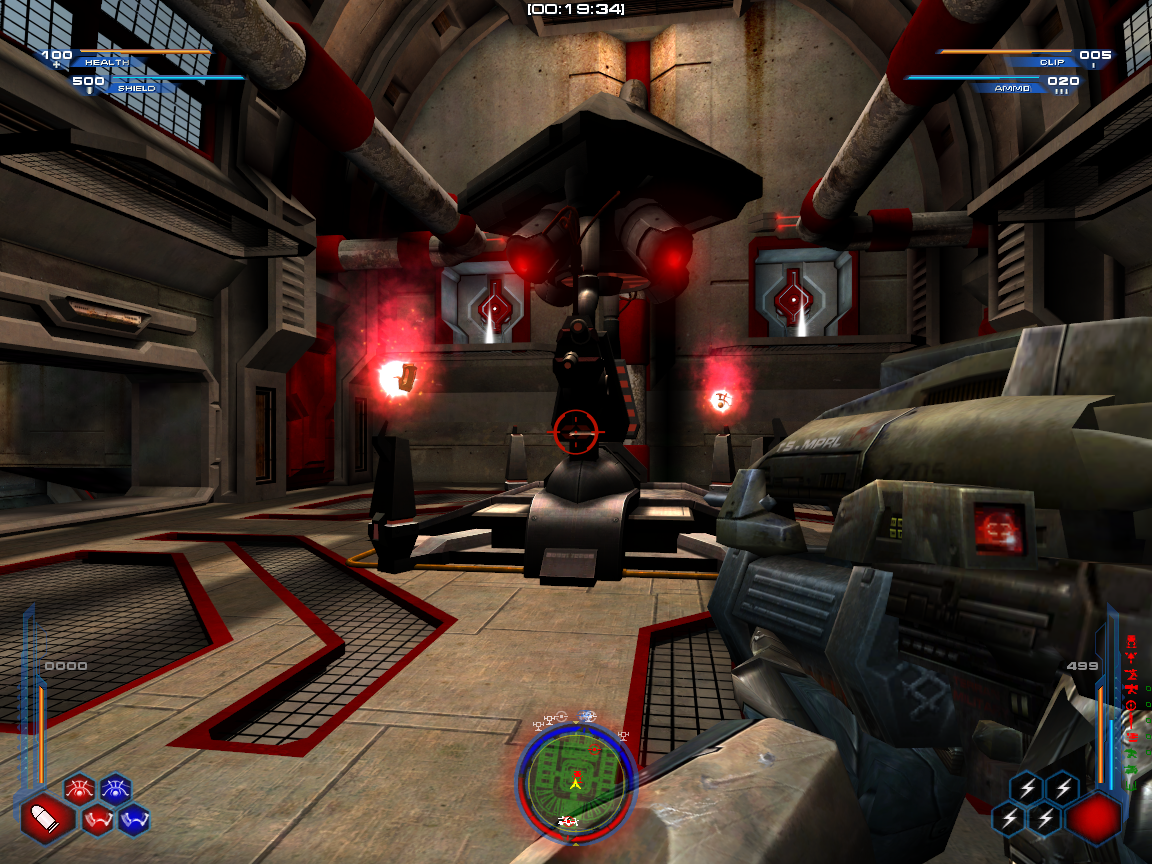
Scott Dalton and Aaron Leiby stepped up to lead this project. Both were passionate and deeply, personally involved. They approached it using agile development, so we could always ship something if we had to (important since we had no idea if or when Infogrames would drop the hammer on it).

The immediate forward momentum helped to push the lukewarm reception of Unreal 2 out of the dev team’s heads in favor of discovering a multiplayer experience that had classes, vehicles, a bunch of new maps, and a lot of replayable fun.
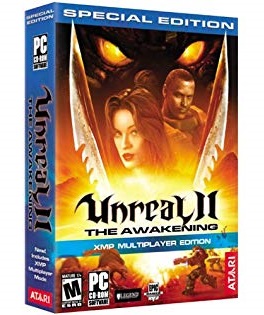
Not only did that group release their baby out to grateful Unreal 2 players for free, but we convinced Infogrames to ship a new edition that contained the XMP patch.
This was the product we should have shipped in the first place.
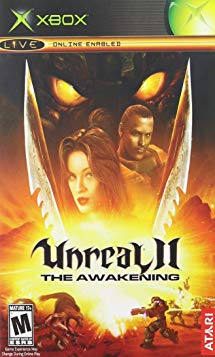
Concurrently, we were working with a port house out of Australia called Tantalus to bring Unreal 2 to the XBox.
The results were mixed, due to the technical limitations of the platform, as well as schedule and budget constraints. For instance, the XBox didn’t have enough memory for the Atlantis map, so the conversations between missions became weird cut scenes. It wasn’t received even as well as the original launch.
The End
Finally, we learned why Infogrames had been so silent with us. They were gearing up to shut down or sell off most of their development houses, especially all those they owned in America. Including Legend.
Their hatchet man showed up one night, and the next day, Legend was no more.
Legend was a huge part of my life for a very long time. We crafted some outstanding experiences for a lot of people. I’ll never see its like again.
One Last Bit
That was an awful somber way to end the article, so instead, I’ll give you this.
One conflict in Unreal 2’s content was the intro. I scripted a whole cut scene that set up the story, but it would have taken significant time to produce. Instead, Scott Dalton really wanted to make something strange: a kind of acid trip through space and other stuff.
I didn’t get it. I wasn’t sure what that had to do with the game we were making, but he had a vision and he insisted it would be cool. He was so passionate, I decided to relent.
I still don’t exactly get it, but I do agree it’s cool. We used it, and here it is.
And if you’re interested in seeing and/or playing Unreal 2, it has been recently made available for next to nothing on Good Old Games.

